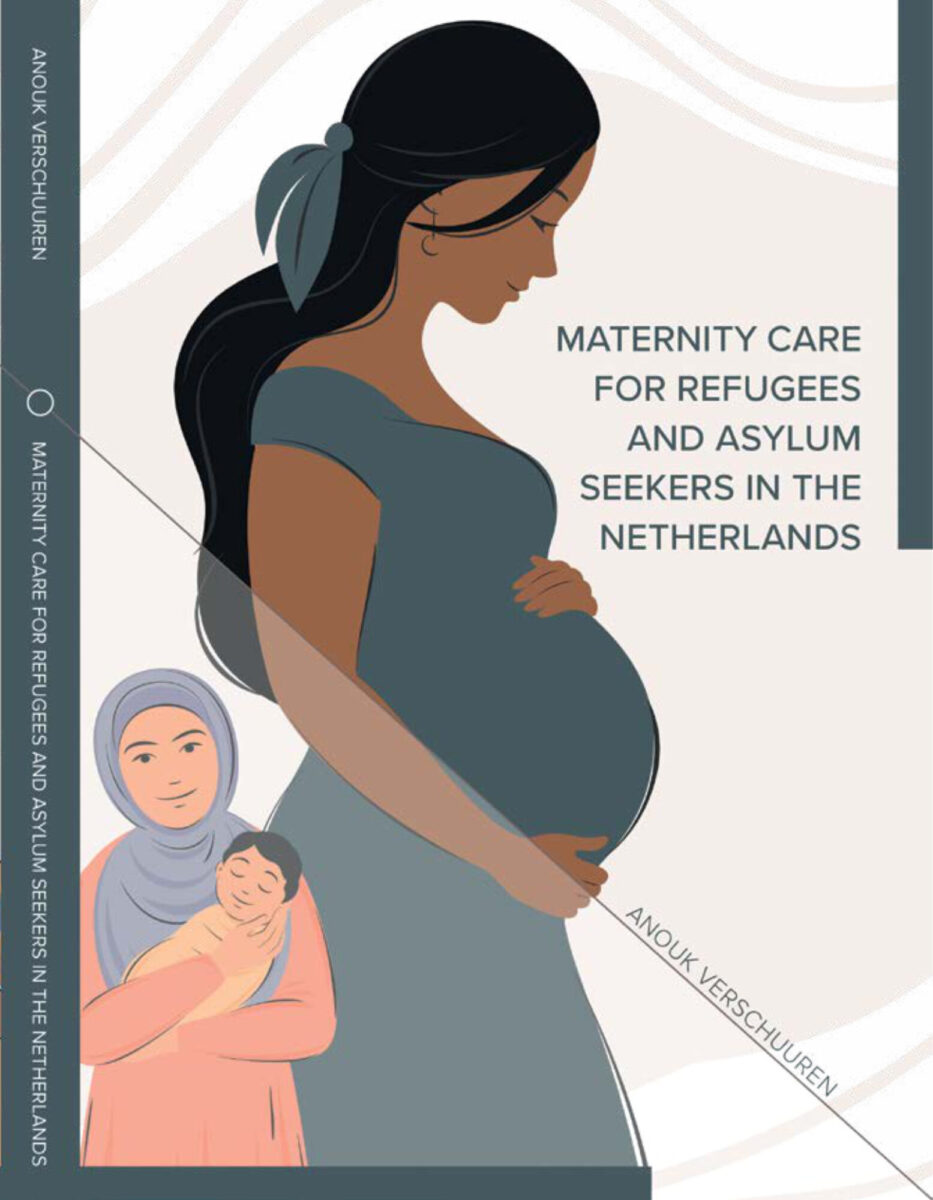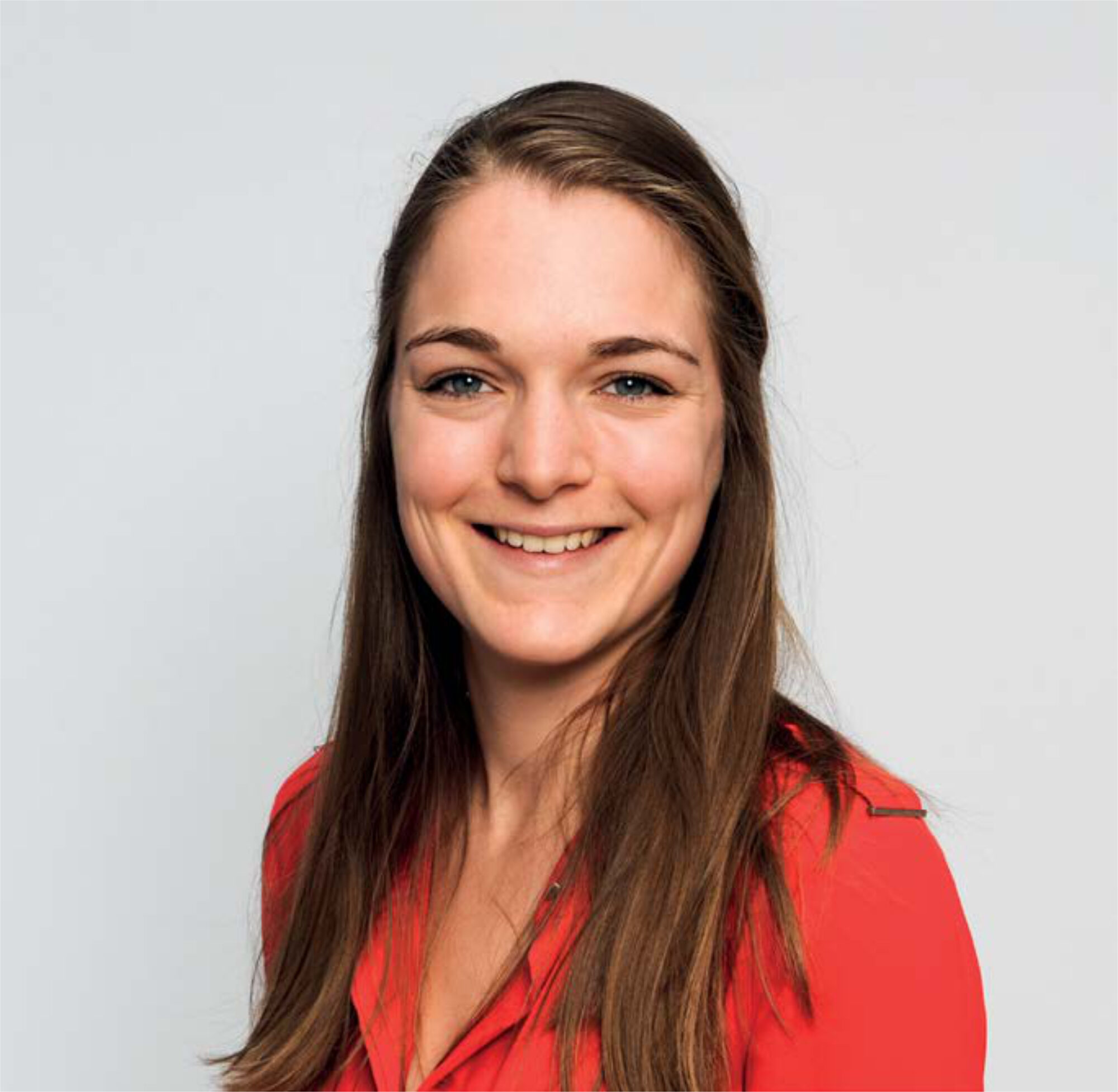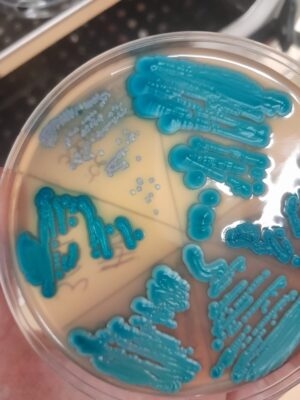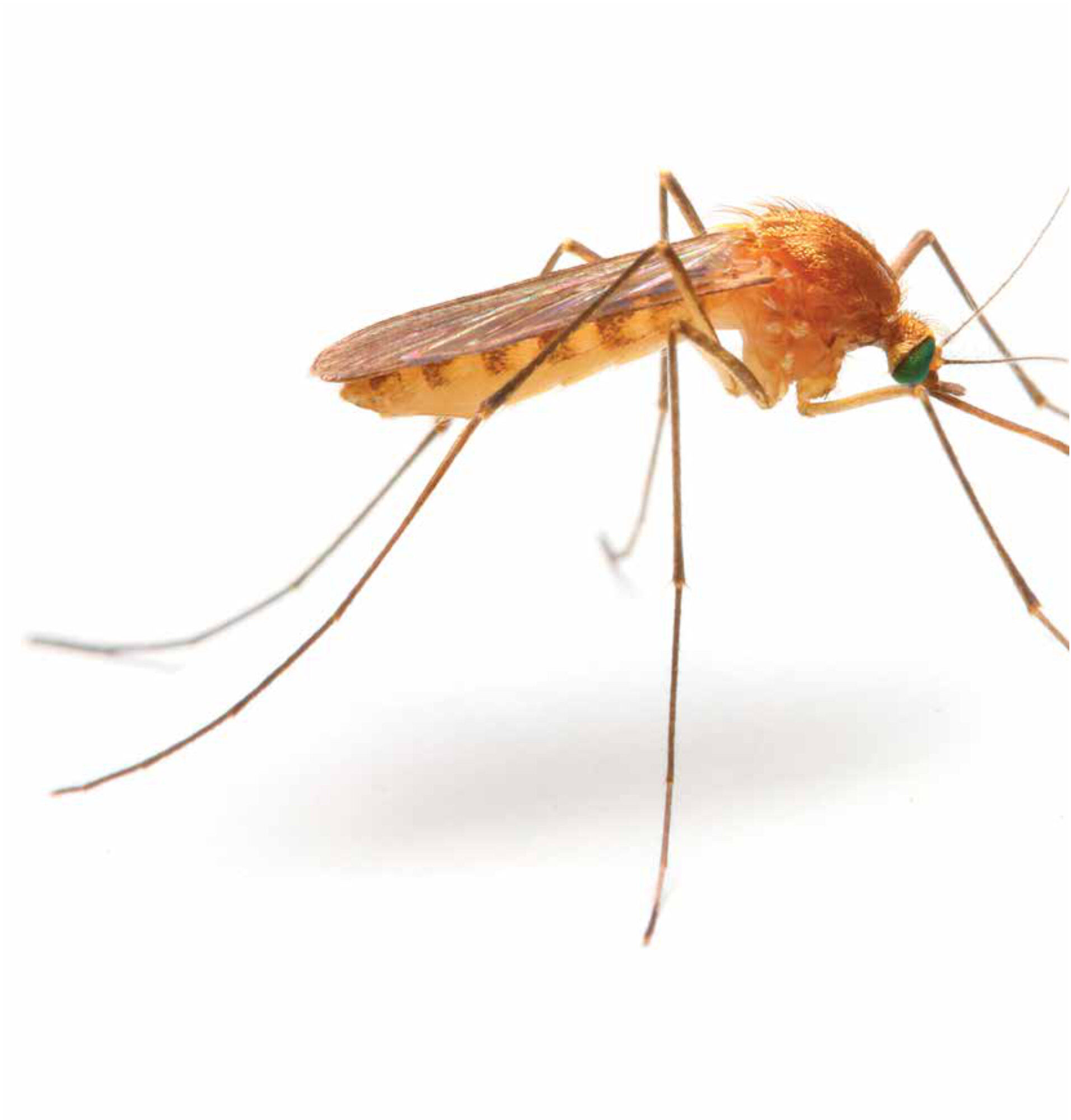Main content
“We expected there would be a difference, but none of us expected the difference to be this big,” says Anouk Verschuuren when talking about the results of her PhD on Maternity care for refugees and asylum seekers in the Netherlands.[1] Verschuuren is a medical doctor, currently working in dermatology and former researcher at the University of Groningen. Over the last years, Verschuuren and her team conducted several studies concerning pregnant asylum seekers, including those in the large asylum seeking centre in Ter Apel in the north of the Netherlands. These studies were initiated following an appeal for help from local midwives who felt that, despite their enormous efforts, this specific group of pregnant women was still not receiving adequate care. Looking for a solution, it was decided that it was important to first assess the extent of the problem. “Once it was clear that the pregnancy risks for asylum seeking women were so much higher than expected, our research team started thinking about the possible causes and, subsequently, what could be done about it,” says Verschuuren.
Perinatal risks and their causes
Verschuuren and her team collected data from all births of asylum seeking women between 2012 and 2016, utilizing records from both the midwifery practice and the hospital providing care to the asylum seekers’ centre in Ter Apel.[2] This included a total of 344 asylum seeking women, who were compared to a group of 2323 Dutch women from the same region in the north-east of Groningen. The most shocking result was the ominously higher risk of perinatal mortality in the asylum seeking group compared to the local Dutch population (3.2 versus 0.6%). After adjusting for birth weight, gestational age, and parity, the relative risk of a perinatal death was 7.21 times higher for asylum seeking women. Also, female asylum seekers often had lower birth weights, longer postpartum hospital stays, and higher rates of opioid use. Drawing conclusions about the lower birth weight is challenging, as this was assessed using Dutch standards of average birth weight which may be less applicable to other ethnicities. However, the increased risk of perinatal mortality was shockingly evident.
This increased risk of perinatal mortality among asylum seekers did not have a single, identifiable cause, but rather a combination of factors. The most significant factors consistently identified were language barriers, the lack of knowledge of the Dutch healthcare system, frequent relocations to other asylum seeking centres, and delay in seeking care. Additionally, the handover of information and teamwork between different healthcare providers was not always seamless. “It is important to note that the latter is not solely a healthcare issue but is also influenced by political decisions, such as the design of the asylum procedure,” according to Verschuuren. These and other suboptimal factors that influenced health seeking behaviour, access to care, and the quality of care were identified by looking at different real-life cases from perinatal audits.[3] During this part of the study, sorrowful and often preventable situations came to light. “One of the women who lost her child was already experiencing loss of green fluid and decreased foetal movements at the beginning of the weekend. Uncertain about who to contact and whether she was allowed to call during the weekend, she reported to the midwife’s office on Monday. A severe infection was discovered, and sadly the baby had already passed away.”
Interpretation and (political) challenges
According to Verschuuren, interpreting the results was particularly challenging. “The asylum seeker population in Ter Apel is incredibly diverse. Within the population there are significant differences in education level, language proficiency, and health literacy. This makes it difficult to draw general conclusions about all asylum seekers.” In addition to the differences within the asylum seeking population in this particular centre, comparing these studies to data of other countries is challenging. Even within Western Europe, there are significant differences in the refugee population. This makes cross-national comparisons difficult. For instance, the Netherlands receives a relatively large number of Syrian refugees (13,030 in 2023), compared to a significantly smaller number in France (2,690 refugees).[4] Furthermore, there are differences between how countries politically manage asylum seekers and how their procedures work. But according to Verschuuren, comparing with other countries is not the only challenge. “Because our pregnancy outcome study was conducted in Ter Apel, it is questionable how representative our own study groups were. For example, due to the location of the study the Dutch control group probably included a relatively large proportion of women with a lower socioeconomic status. This raises questions about how comparable this group is to the rest of the Dutch population. Theoretically, it could therefore be the case that the differences between the pregnancy outcomes of asylum seekers and the Dutch population are even greater,” explains Verschuuren.

On the other hand, the group of asylum seekers in Ter Apel is also a complex group, with potentially a higher risk than other asylum seekers in the Netherlands. Ter Apel is a unique asylum seekers’ centre because it serves as a registration centre for the asylum procedure. This means that the people who report here have only been in the Netherlands for a short time, sometimes only a few days. Because of their journey women might not have received medical care for an extended period of time. The purpose of this centre is to transfer asylum seekers within 3 to 10 days to other asylum seekers centres for a longer-term stay. These more permanent centres often have a doctor on site and access to healthcare is better organised. However, in practice, the scarcity of these more permanent asylum places often necessitates the use of temporary accommodations.[5] This results in frequent relocation of large groups of vulnerable people, with limited knowledge of the Dutch healthcare system.
To advocate change, a shift in mindset is essential, argues Verschuuren. “The way our society looks at migrants needs to change if we truly want to achieve something. Migrants are often eager to work hard and become part of our society. So, if we were to give them those opportunities, migration could be a win-win in which both migrants and society benefit greatly.”
However, with the current political climate and the Dutch government’s move to declare an ‘asylum crisis’ and attempts to bypass European asylum rules, it seems unlikely that this situation will improve soon.[6] Nevertheless, Verschuuren remains hopeful: “The current political climate is challenging, but it gives me hope to see how much attention our research has received. I am not alone in wanting change, and that’s encouraging.”
Practical tips
Healthcare providers can also implement smaller-scale changes themselves, like familiarising themselves with culturally sensitive care. One of Verschuuren’s most practical tips is to make use of an interpreter service. This may seem obvious, but in practice it happens less often than recommended.[3] Verschuuren: “I work in healthcare myself; I know it can be difficult due to time pressure, but it’s been proven that a child or a partner as translator is not a good option as an interpreter. We know that too much information is lost in that case.” Verschuuren also emphasises the importance of paying attention to the mental health issues refugees and asylum seekers often are dealing with. “It is important to realise that many women have had a difficult time and often still experience a great deal of stress related to the asylum process. For many women, this makes pregnancy a low priority.”
The numbers speak for themselves: the perinatal mortality rate among asylum-seeking women in Ter Apel is unacceptably high. There are several underlying causes resulting in less access to adequate care for these women. Addressing this problem necessitates a twofold approach: smaller-scale changes and a fundamental shift in policy.
| Given the alarming results from Ter Apel, a collaborating research group in Rotterdam decided to repeat the analysis but with the inclusion of national data in the EGALITE project.[7] This project included newly registered asylum-seekers as well as women who were granted official refugee status during the time of the study. The perinatal mortality rate in this study was still higher compared to Dutch women without a migration background (1.4 times the Dutch rate). However, the difference was much less pronounced than in the study by Verschuuren et al. What is important to note is that women without a social security number at the time of delivery and who did not receive a legal refugee status afterwards were not included in the national data and therefore not included in the outcomes of the EGALITE project. Given that 31-75% of asylum applications were rejected over the last five years, a significant proportion of these women may not be included in the national database.[8] This problem is also known as ‘data invisibility’. Julia Tankink, researcher on the EGALITE project, describes this problem in more detail in the article on page 14-15. |
References
- Verschuuren AEH. Maternity care for refugees and asylum seekers in the Netherlands [Internet]. University of Groningen; 2024. Available from: http://hdl.handle.net/11370/a7a7155b-4a36-4329-a716-fc36ce46739c
- Verschuuren AEH, Postma IR, Riksen ZM, Nott RL, Feijen-De Jong EI, Stekelenburg J. Pregnancy outcomes in asylum seekers in the North of the Netherlands: A retrospective documentary analysis. BMC Pregnancy Childbirth. 2020 May 25;20(1).
- Verschuuren AEH, Tankink JB, Postma IR, Bergman KA, Goodarzi B, Feijen-De Jong EI, et al. Suboptimal factors in maternal and newborn care for refugees: Lessons learned from perinatal audits in the Netherlands. PLoS One. 2024 Jun 1;19(6 June).
- Eurostat. Migration and Asylum Database [Internet]. 2024 [cited 2024 Sep 17]. Available from: https://ec.europa.eu/eurostat/web/migration-asylum/asylum/database
- COA. Opvanglocaties tijdens de asielprocedure [Internet]. 2024 [cited 2024 Sep 16]. Available from: https://www.coa.nl/nl/opvanglocaties-tijdens-de-asielprocedure
- Wulp X van der, Jonker J. Kabinet wil asielinstroom snel beperken, trekt deel asielwet in. NOS [Internet]. 2024 Sep 12 [cited 2024 Sep 27]; Available from: https://nos.nl/l/2536904
- Tankink JB, Bertens LCM, de Graaf JP, van den Muijsenbergh METC, Struijs JN, Goodarzi B, et al. Pregnancy outcomes of forced migrants in the Netherlands: A national registry-based study. J Migr Health. 2024 Jan 1;10.
- Rijksoverheid. Kerncijfers Asiel en Migratie [Internet] 2019-2023 [cited 2024 Oct 3]. Available from: https://www.rijksoverheid.nl/documenten/rapporten/2016/12/13/kerncijfers-asiel-en-migratie



















































